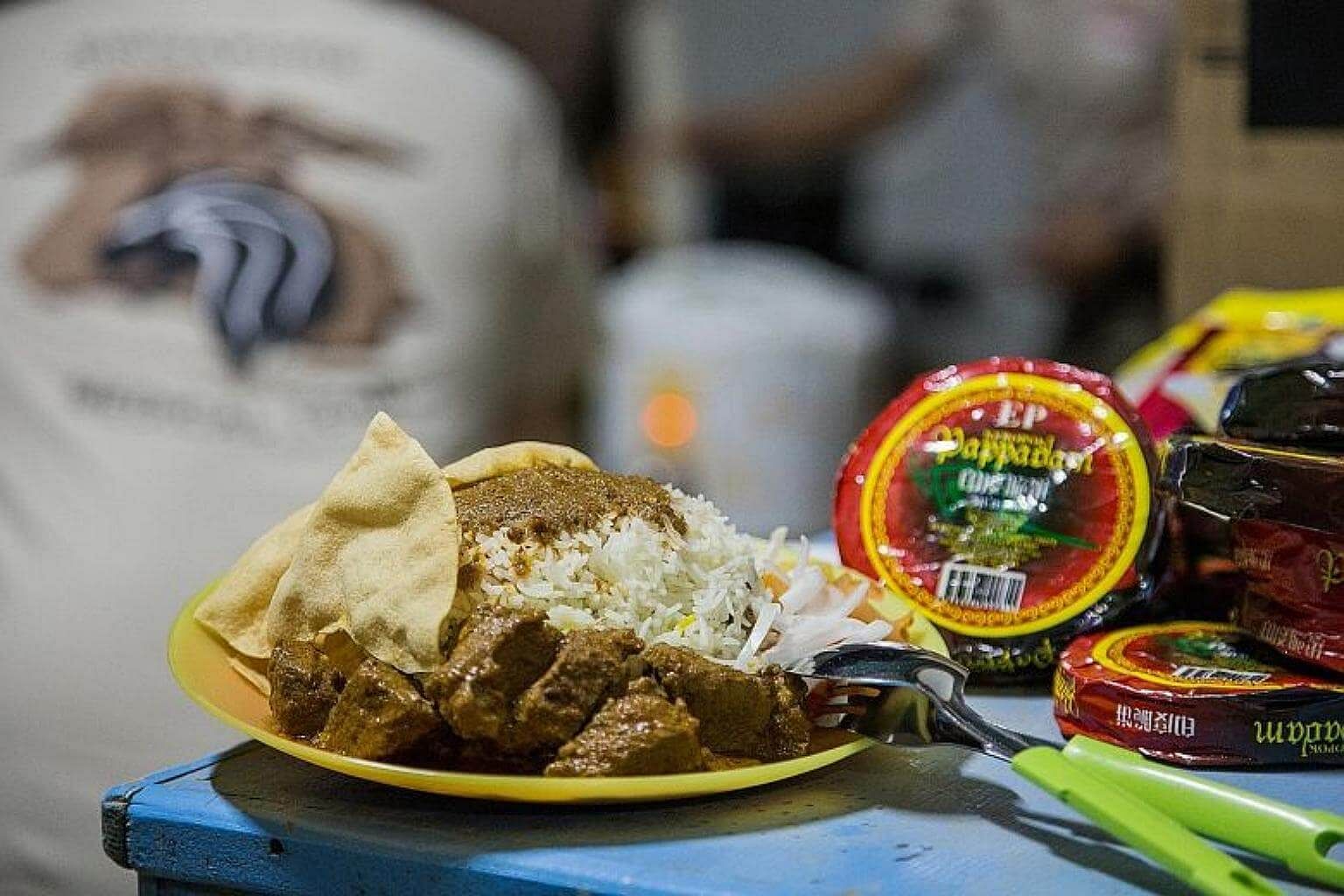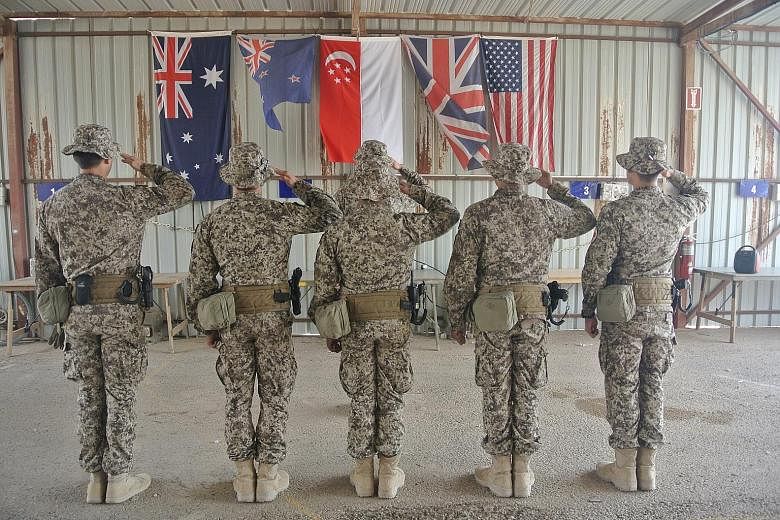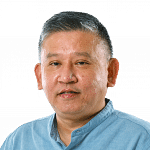Singaporean Megat Shahdan Abdul Samad created a stir online last Sunday when he featured in the latest recruitment video for terror group Islamic State in Iraq and Syria (ISIS).
When news of the video broke, I was in the United States Air Force (USAF) airbase in Kuwait waiting to board a C-130 transport plane that would take me to Iraq.
I was travelling to meet a little-known group of Singaporeans who, like Shahdan, had gone to Iraq. But unlike the militant who had gone to create violence, the men whom I was meeting were there to stop it. They are Singapore Armed Forces (SAF) soldiers who are members of the multinational coalition set up to defeat ISIS.
They have been deployed there since June as part of the medical team, working alongside the Australian Defence Force and New Zealand Defence Force to provide medical support to coalition efforts.
To get to the coalition base in Iraq, I had to take a commercial flight to Kuwait City through Dubai, before hopping onto the USAF plane.
My travelling companion was a Ministry of Defence (Mindef) media relations officer.
"Getting you into Iraq is unprecedented," she said, referring to Mindef making an exception to its media restriction policy and allowing The Sunday Times to visit troops on the ground there.
About a dozen US Army soldiers were also in the plane, as was cargo bound for Iraq. The Americans mostly kept to themselves.
The C-130 cargo plane was unlike passenger planes. Its soldier passengers sat in the cargo hold - about the size of a four-room HDB flat - along the sides of the plane, shoulder to shoulder, on webbing seats.
The windows consisted of a few portholes along the fuselage. The four propellers were so noisy that earplugs were given out by the air crew and had to be worn throughout the flight. It was impossible to talk above the noise.
FLARES AND A SHARP LANDING

The last leg of the flight was dramatic.
As the plane prepared to make its landing at an airstrip within the base, I had to don a Kevlar helmet and body armour. It dived sharply towards the airstrip and I heard what sounded like crackers being fired from the sides of the plane.
A senior SAF officer travelling with us explained: "Those are chaffs. It is standard operating procedure for pilots to fire them when they land in hostile zones."
I learnt later that chaffs are flares used to counter heat-seeking surface-to-air missiles.
As the plane came to a halt, two fully armed US Army soldiers fanned out from the rear ramp to form a security perimeter around the plane. They signalled for us to disembark only after they were satisfied the landing zone was safe.
I handed my passport to an Iraqi immigration officer at a booth in a tent at the side of the airstrip. He checked my visa and stamped my passport.
Mindef had asked The Sunday Times not to publish the name of the base or the identities of the Singapore soldiers for their safety. In September last year, the Australian Broadcasting Corporation reported that it was used as a training camp for Australian forces to train Iraqi forces who were fighting to retake their country back from ISIS.
A curfew was in place when I arrived at the base, which meant that the movements of the 2,000 personnel within the compound with high walls were restricted at night. The curfew was imposed after drone activity was detected a day earlier.
"How uncanny," I said to the Mindef media relations officer. Just hours earlier, as we were transiting through Dubai, I told her that I had read in The New York Times that the Pentagon was testing lasers and nets to counter ISIS drones that the newspaper described as a vexing foe.
The commander of the Singapore medical team, doctor "R" who is in his 30s and had met us at the airstrip, said the base has amenities like Wi-Fi, air-conditioned accommodation and hot showers, even though conditions are harsh.
The doctor had arrived in Iraq early last month, taking over command of the medical team after the first batch completed a three-month rotation between June and September.
"This is my first overseas deployment," he said. "It is a heavy responsibility."
Recently engaged, Dr R said his fiancee and family were supportive of his deployment. "They know the risks and support what I am doing."
The doctor's right-hand man in the medical team is paramedic "M", also in his 30s. He is the oldest of the medics in the team and is its sergeant major.
Both Dr R and M were armed with P226 pistols. All the soldiers in the base are required to be armed.
M took me for a tour of the medical centre last Monday, the second day of my visit.
"We are singing Majulah Singapura at 8am, please join us," he said.
As the medical team sang the National Anthem accompanied by a soundtrack from the hissing speakers of a well-worn CD player, they saluted the Singapore flag. It hung amid the flags of Australia, New Zealand, the United Kingdom and the United States - lined up in alphabetical order - in the ambulance bay of the medical centre.
They sang with pride but their tone was a little off-key, the soldiers' voices hoarse from the arid desert air and heat. The temperature soared to furnace-like heat of as high as 42 deg C the day I visited.
"The first rotation started it when they came here in June," M said of the weekly ritual. "We continued the practice after we took over.
"We do it every Monday, at the start of the week, to remind ourselves of home."
Do you miss home, I asked.
"I don't miss home, but I miss the food," he replied without missing a beat.
Cooking overcomes homesickness and helps them make friends with soldiers from other countries, he said. He took out his mobile phone and showed me a photo of a plate of nasi briyani. "We cooked this just two weeks ago," he said. "We have also cooked nasi lemak."

CONTAINER PARK
M took me to where the Singapore soldiers stay.
The commander and company sergeant major of the medical company get their own individual containers. The rest of the soldiers are paired up and each pair shares a container about the size of two parking spaces. The containers are laid out in what resembles a container park.
M shares a container with Dr R. The beds are pushed to the two furthest ends of the container while two 2m-high cupboards divide the room into equal halves. The cupboards also act as walls providing some measure of privacy. I asked if I could take a photo of the room. He demurred. I did not press.
For three months, all the personal space the soldiers get is a bed and a cupboard packed into a space about the size of a parking space. I, for one, could not take living for months with so little privacy.
Because of the cramped quarters, the soldiers spend most of their off-duty hours chilling at a "Singapore corner", which is a sheltered space outside two containers, with tables and chairs for about a dozen people. A string of eight napkin-size national flags, coated with desert grime, had been nailed across the top of an opening between two concrete walls that led to the Singapore corner.
The days are repetitive and even monotonous.
The medical team works from 8am to 4pm, six days a week, with a rest day on Friday.
The medics typically start and end the day with fitness training. In between, they practise their medical procedures and drills. They also go to the firing range to keep their marksmanship sharp.
The Singapore team is deployed as a trauma team in the medical centre. "We are like an accident and emergency team," M said.
The previous team had seen lacerations, fractures and heat injuries. I asked M how many emergency cases his team had handled.
He replied: "We've not had to handle any emergency in the three weeks we have been here."
Still, they keep up their training.
On the day I visited, the team was practising its drill for a mass casualty situation where all the injured soldiers were rushed to the medical centre. "We practise this almost every week," he said.
"We want to be ready."
'AND THEY LIKE SPICY FOOD'
I had lunch with M and several other medics at the base's central dining hall, called DFAC, which is - unsurprisingly - an abbreviated name for dining facility.
Half-way through lunch, three American soldiers who had finished their meal at the next table walked over to M on their way to return their trays and said: "You guys are doing great!"
"They are the air medics from Oregon," M said, adding: "They fly the helicopters. We have trained with them."
An Australian physiotherapist, who is a member of the medical team, told me that she found the Singaporeans "very professional".
"They tend to be shy, but after I got to know them, they are humorous," she said. "And they like spicy food!"
M noted that it has been easy working with the other servicemen from various countries. "We speak English, although it took some time to understand them, and for them to understand us," he said.
Another medic jested: "I don't know why they have to say 'quarter to one' when it is easier to say '12.45'. I learnt 'quarter to this' and 'half past that' in primary school but we just don't say that in Singapore."
M said that the Singapore soldiers have to learn to slow down as they speak. He added that they have tried to teach their colleagues Singlish, too.
What Singlish, I asked.
Encik is Malay for warrant officer, and agak agak is roughly, they replied.
Tell me something interesting that you have learnt from them, I probed.
They replied, cracking up: "Australian soldiers are called 'diggers', and 'don't be a jack' means don't 'eat snake' or (be) slack."
IN HARM'S WAY
On the third day of my visit, I met Defence Minister Ng Eng Hen, who had just made a whirlwind four-hour visit to the base and to see the Singapore medical team.
"Why did we send soldiers here? Why put them in harm's way?" I asked Dr Ng.
He replied: "It's quite obvious that this is not friendly territory. There are threats all over."
The deployment in Iraq is a long-term one against extremism and terrorism, he said, adding that it is in Singapore's interest to join the international effort against such threats. "When we join others, it is to protect Singapore and Singaporeans."
I posed a similar question to Dr R and M separately: "Do you know why you are here?"
Both gave uncannily similar answers - that Singapore is contributing to the coalition effort against the terror threat.
"But what does it mean to you personally? Do you feel you are making a difference?" I asked.
Dr R replied: "We are ambassadors. Each time we put on the uniform and do our work well, we fly the Singapore flag."
M said, after a long pause: "We are here to play a role. It is an important medical role because the soldiers trust that we will look after them when they are injured.
"We are a small team. But no effort is too small or unimportant.
"What might happen, you never know."




